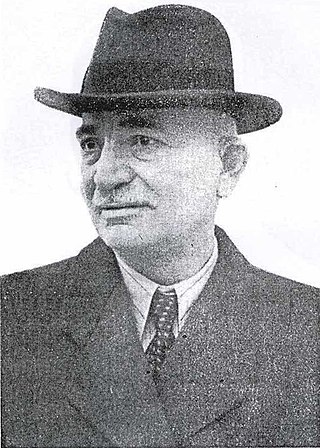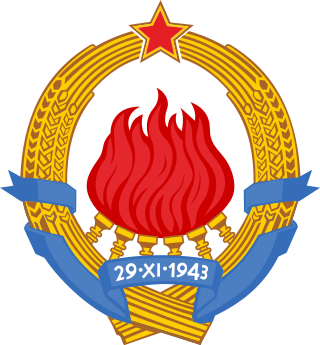List of ministers
Kingdom of Yugoslavia (1918–1941)
| Minister | Image | Party | Term start | Term end | Lifespan | |
|---|---|---|---|---|---|---|
| Stojan Protić |  | People's Radical Party (NRS) | 1 December 1918 | 20 December 1918 | 1857–1923 | |
| Momčilo Ninčić |  | People's Radical Party (NRS) | 20 December 1918 | 16 August 1919 | 1876–1949 | |
| Vojislav Veljković |  | Democratic Party (DS) | 16 August 1919 | 19 February 1920 | 1865–1931 | |
| Velizar S. Janković |  | People's Radical Party (NRS) | 19 February 1920 | 16 May 1920 | ||
| Kosta Stojanović |  | Democratic Party (DS) | 16 May 1920 | 3 January 1921 (Died in office) | 1867–1921 | |
| Milorad Drašković Acting Minister |  | Democratic Party (DS) | 3 January 1921 | 31 March 1921 | 1873–1921 | |
| Kosta Kumanudi |  | Democratic Party (DS) | 31 March 1921 | 16 December 1922 | 1874–1962 | |
| Milan Stojadinović |  | People's Radical Party (NRS) | 22 December 1922 | 28 July 1924 | 1888–1961 | |
| Mehmed Spaho |  | Yugoslav Muslim Organization (JMO) | 28 July 1924 | 6 November 1924 | 1883–1939 | |
| Milan Stojadinović |  | People's Radical Party (NRS) | 6 November 1924 | 8 April 1926 | 1888–1961 | |
| Nikola Uzunović Acting Minister |  | People's Radical Party (NRS) | 8 April 1926 | 13 April 1926 | 1873–1954 | |
| Ninko Perić |  | People's Radical Party (NRS) | 15 April 1926 | 24 December 1926 | 1886–1961 | |
| Bogdan Marković |  | People's Radical Party (NRS) | 26 December 1926 | 28 July 1928 | 1880–1938 | |
| Niko Subotić |  | 28 July 1928 | 7 January 1929 | |||
| Stanko Švrljuga |  | Yugoslav National Party (JNS) | 7 January 1929 | 19 June 1931 | 1880–1958 | |
| Đorđe Đurić |  | Yugoslav National Party (JNS) | 19 June 1931 | September 1931 | ||
| Milorad Đorđević |  | Yugoslav National Party (JNS) | September 1931 | 22 December 1934 | ||
| Milan Stojadinović |  | Yugoslav National Party (JNS) | 22 December 1934 | 24 June 1935 | 1888–1961 | |
| Yugoslav Radical Union (JRS) | ||||||
| Marko Kožul |  | Yugoslav Radical Union (JRS) | 24 June 1935 | 7 March 1936 | ||
| Dušan Letica |  | Yugoslav Radical Union (JRS) | 7 March 1936 | 5 February 1939 | 1884–1945 | |
| Vojin Đuričić |  | Yugoslav Radical Union (JRS) | 5 February 1939 | 26 August 1939 | 1888–1944 | |
| Juraj Šutej |  | Croatian Peasant Party (HSS) | 26 August 1939 | 18 April 1941 | 1889–1976 | |
Yugoslav government-in-exile (1941–1945)
| Minister | Image | Party | Term start | Term end | Lifespan | |
|---|---|---|---|---|---|---|
| Juraj Šutej |  | Croatian Peasant Party (HSS) | 18 April 1941 | 10 August 1943 | 1889–1976 | |
| Milan Martinović |  | 10 August 1943 | 1 January 1944 | |||
| Nenad Grigozono |  | 1 January 1944 | 8 July 1944 | |||
| Juraj Šutej |  | Croatian Peasant Party (HSS) | 8 July 1944 | 7 March 1945 | 1889–1976 | |
SFR Yugoslavia (1945–1992)
FR Yugoslavia (1992–2003)
| No. | Portrait | Minister for Finance | Took office | Left office | Time in office | Party |
|---|---|---|---|---|---|---|
| 1 | Oskar Kovač (1937–2021) | 14 July 1992 | 11 September 1992 | 59 days | SPS | |
| 2 | Dragan Jovanović | 11 September 1992 | 2 March 1993 | 172 days | Independent | |
| – | Jovan Zebić (1939–2007) Acting | 2 March 1993 | 6 July 1993 | 126 days | SPS | |
| 3 | Vuk Ognjanović (born 1939) | 6 July 1993 | 15 September 1994 | 1 year, 71 days | DPS | |
| 4 | Jovan Zebić (1939–2007) | 15 September 1994 | 12 June 1996 | 1 year, 271 days | SPS | |
| 5 | Tomica Raičević (born 1943) | 12 June 1996 | 20 March 1997 | 281 days | SPS | |
| 6 | Božidar Gazivoda (born 1940) | 20 March 1997 | 20 May 1998 | 1 year, 61 days | DPS | |
| 7 | Dragiša Pešić (1954–2016) | 20 May 1998 | 24 July 2001 | 3 years, 65 days | SNP | |
| 8 | Jovan Ranković (born 1930) | 24 July 2001 | 7 February 2002 | 198 days | DSS | |
| – | Veroljub Dugalić (born 1955) Acting | 7 February 2002 | 17 March 2003 | 1 year, 38 days | G17+ |






















